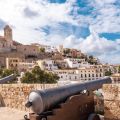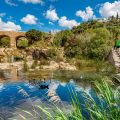Ibiza World Heritage route
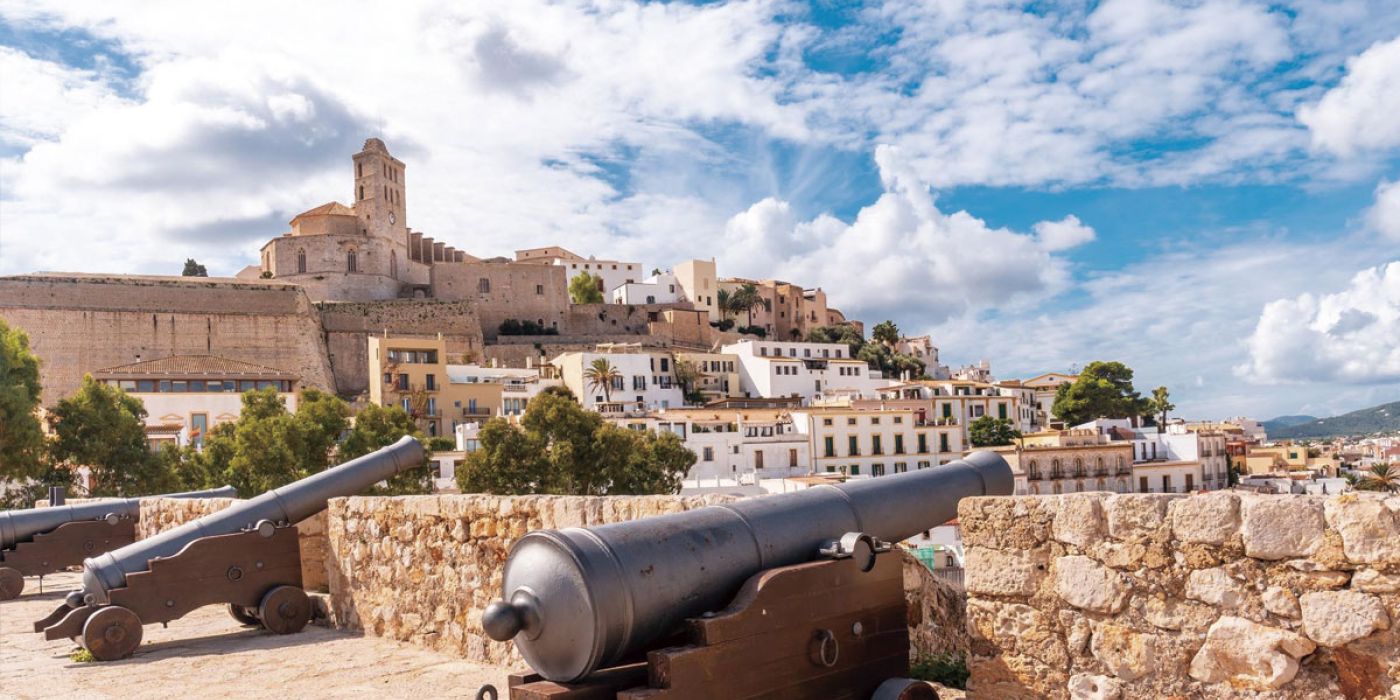
The following places comprise a cultural route that you can follow with your family and which will enable you to discover innumerable stories and curious facts about the island. A whirlwind trip through time, beginning over 100,000 years ago with the most long-lived organism on the planet, and culminating in the 16th century, with a citadel built to a design that was destined to cross the Atlantic. Are you ready to set off on the route discovering Ibizan Cultural Heritage?
2024 marked the 25th anniversary of the inclusion of four island locations in the UNESCO list of Cultural Heritage Sites known as "Ibiza biodiversity and culture." These places which the United Nations proposed to protect and highlight are the seagrass fields lying between Ibiza and Formentera, the Phoenician settlement of Sa Caleta, the Puig des Molins necropolis, and the citadel that rises high in the island's capital (Dalt Vila).
Albeit in summer, or out of season, this child-friendly plan for Ibiza can be combined with other activities such as water sports, swimming in the sandy coves close by or watching the historical re-enactments performed for children and adults. These are just a few of the enjoyable additions to your route, and although they are fine and lots of fun at any time of the year, do be careful in summer when it can get very hot, especially if you have small children with you.
The route, step by step
The following route has been organised according to proximity, but you can adapt it to suit your plans. For example, you can follow the whole route in one day, or you could split it into two days so that you have time to spend on more child-oriented activities.
Step #1: The Es Puig des Molins Necropolis
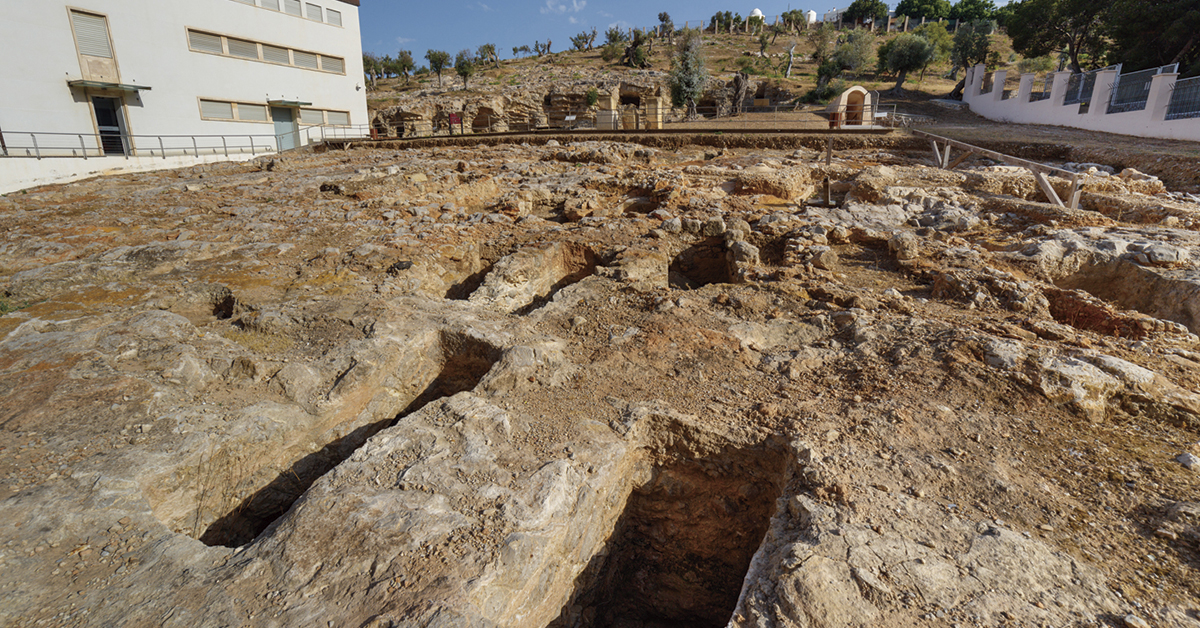
The route begins in the city of Ibiza near Dalt Vila, on the hill where you will find Es Puig des Molins, the largest and best-preserved Carthaginian/Phoenician necropolis in the Western Mediterranean. Its name (“Windmill Hill”) derives from the numerous windmills that have dominated the hilltop since at least the 15th century, some of which are still standing today.
The archaeological site covers five hectares with over 3000 tombs carved into the rock between the 7th and 1st centuries BCE, 300 of which can still be seen from the outside. Initially built by the Phoneticians, the founders of Ibiza, the necropolis is a precious legacy which illustrates the important role that the island played in the Mediterranean economy in antiquity.
You can visit some of these burial sites and the necropolis museum which has a permanent collection of Phoenician, Carthaginian and Roman artefacts. You will also learn some interesting facts about the former inhabitants.
Hint: Sign up for the historical re-enactments that regularly take place and check out the MAEF programme of activities for children. You will find some interesting things to do, such as the "Family time at the museum" workshops or the "Summer archaeology workshop" held in Es Porxet, a16th century country cottage located inside the museum itself. More information
Step#2: Dalt Vila
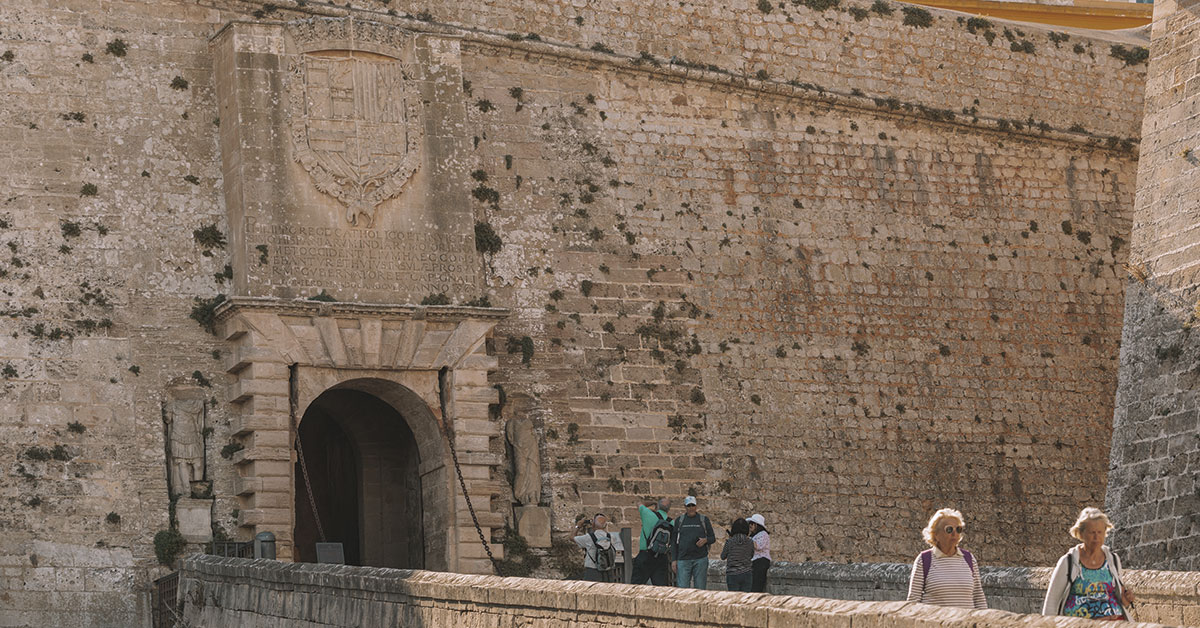
And from Antiquity you now take a long leap into the 16th century which is an extraordinary example of Renaissance military architecture recognised by UNESCO for the enormous influence it had on the Spanish design of fortifications in its New World settlements. As you stroll around its walls, you will learn that these fortifications are still the same as those raised by order of Philip II and they have remained intact. And it is easy to imagine the watchmen patrolling the ramparts and scanning the horizon out to sea on the lookout for pirates, or soldiers preparing to defend the citadel from imminent attack.
As you pass along the walls you will find a number of panels containing information which serve as an excellent guide to learning some interesting facts about the citadel’s construction and the innovations designed by Giovanni Battista Calvi, the conflicts and threats prevailing in the Western Mediterranean in the 16th century, the methods of defence employed in those days, and so much more.
In the themed bastions of Sant Pere and Sant Jaume children and adults too can have fun trying on helmets and armour, holding muskets and swords and seeing the cannon balls... And when you return from your circuitous route, your imagination will be buzzing as you espy possible smoke signals in the distant watch towers of Sa Sal Rossa, in Playa d’en Bossa and, further south, at Ses Portes.
Hint: At dusk, drop by one of the historical re-enactments performed in the streets of Dalt Vila. They will narrate the legends, historical anecdotes and fabulous stories of the olden days in Ibiza! Organised by Ibiza City Council they are performed in several languages. Check times and bookings here.
Step#3: the sea grass meadows

The third stop along the route takes you to two beaches in the nature reserve of Ses Salines: Es Cavallet and Ses Salines. Both are excellent examples of the sandbanks and dune systems that have been preserved thanks to the influence of seagrass - posidonia oceanica - a marine plant native to the Mediterranean. The seagrass meadows between Ibiza and Formentera were also included in the UNESCO Natural Heritage designated in 1999 due to their amazing natural value. Extending throughout the channel that separates Ibiza and Formentera, aside from the fact that these fields are the largest of their kind in the world, the seagrass is also the most ancient living being in the biosphere. Can you imagine swimming alongside an organism that has existed for over 100,000 years and that grows so slowly, by just 1 to 2 cm annually?
In addition to these impressive figures, seagrass as a species and ecosystem has further qualities in that it purifies and oxygenates the waters where it grows, absorbing huge quantities of carbon. It also offers protection and serves as food for several marine species, as well as buffering the coastline, protecting it from erosion by the sea water, forming a marine reef which helps to maintain the sand dune systems and keeping the waters crystal clear. As the dead stalks of the grasses are washed ashore, they accumulate and form a barrier against erosion caused by winter storms, gradually becoming buried under the sand forming the beach.
Hint: Check out the Ses Salines Nature Reserve website to find out more about sea trips and coastal outings provided by the environmental education team.
Step #4: Sa Caleta Settlement

At this settlement, just a few kilometres from Ses Salines Nature Reserve, the route and you along with it, will once more return to Phoenician times. Some metres from the beach of Es Bol Nou, also known as Sa Caleta, you will find the ruins of a settlement dating from the 8th century BCE. It is believed to have been abandoned after some 50 years in a planned and peaceful manner, very likely for the purpose of founding a new city in a more favourable location, namely, the bay of Ibiza.
Children and adults alike will enjoy and be enthused by imagining the Phoenicians' way of life as they carry out an activity based on what they see at the site, with a drawing of the streets, squares and homes; a platform with a communal bread oven and the remains of what may have been metal smelting furnaces. If you follow the path on the site, you will come to a small natural harbour that was used by the Phoenicians. Today it is one of the finest examples of the fishermen's boathouses or huts in Ibiza which have been declared a Cultural Heritage Site.
Hint: During the summer months you can combine this visit with a route that also takes in the beaches and coves of southern Ibiza.





